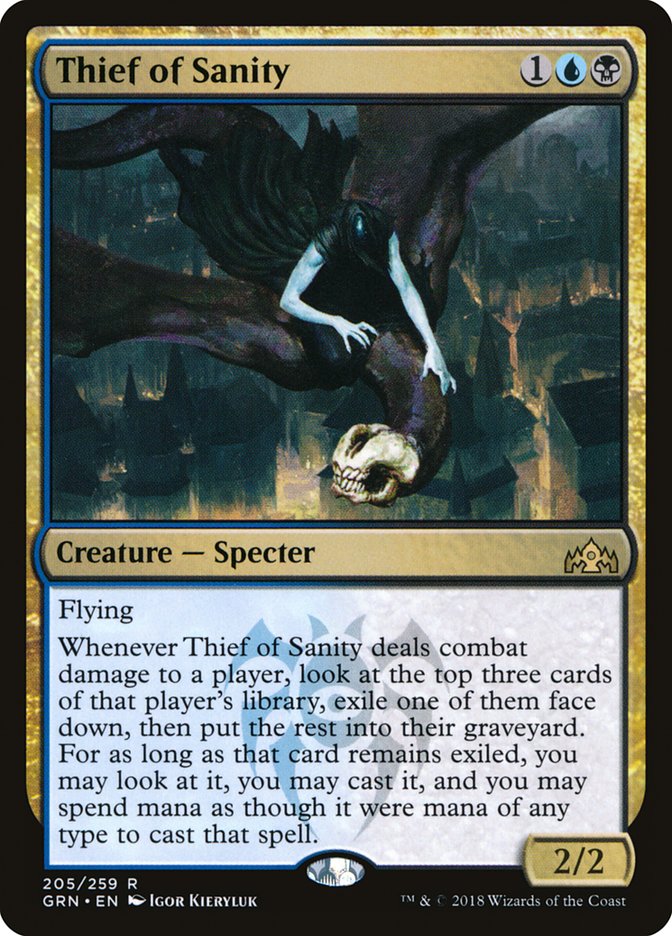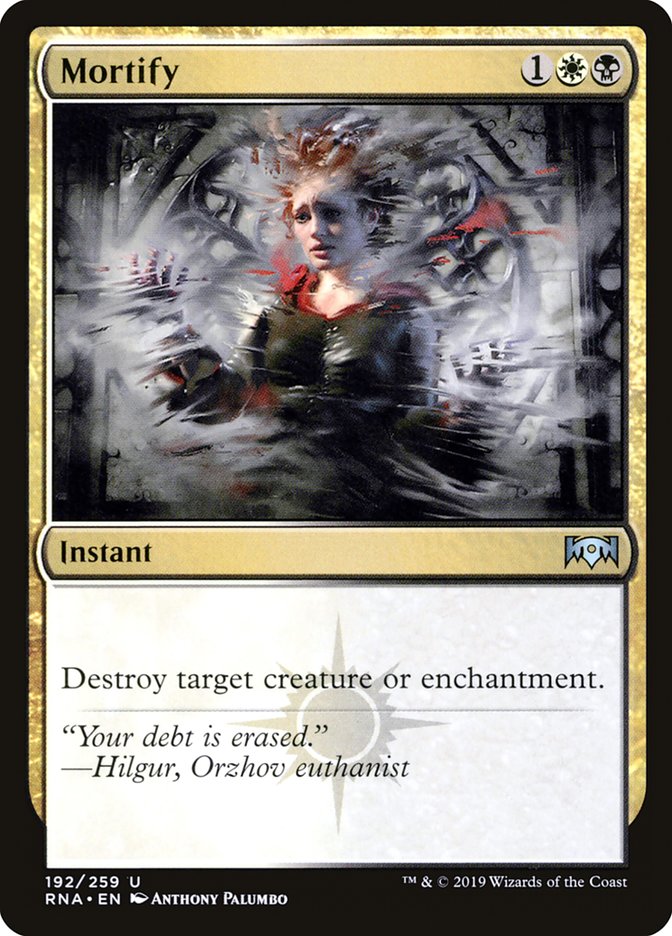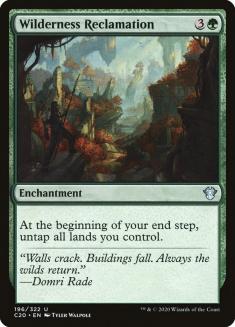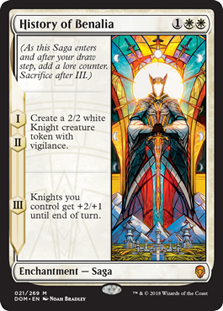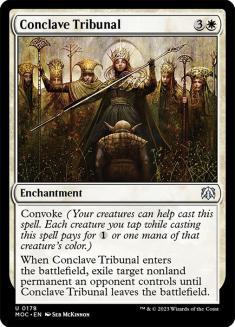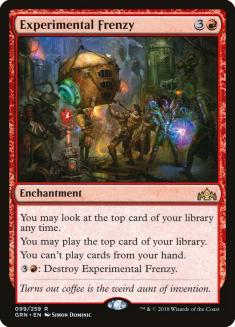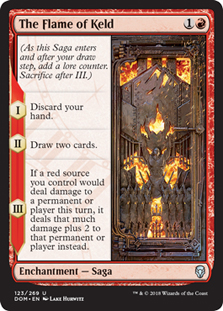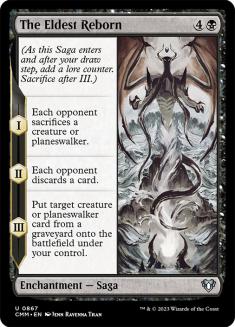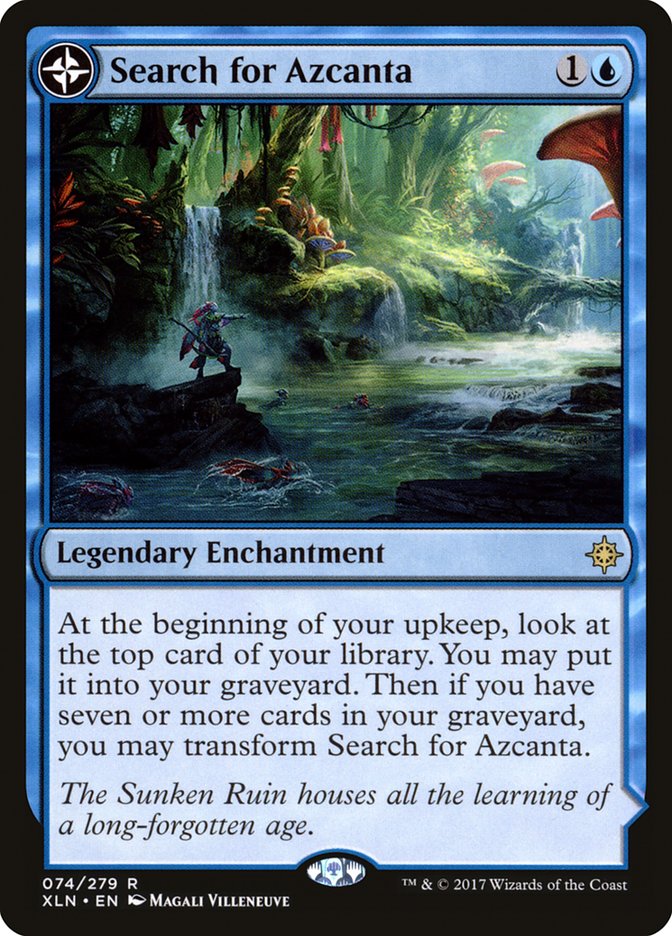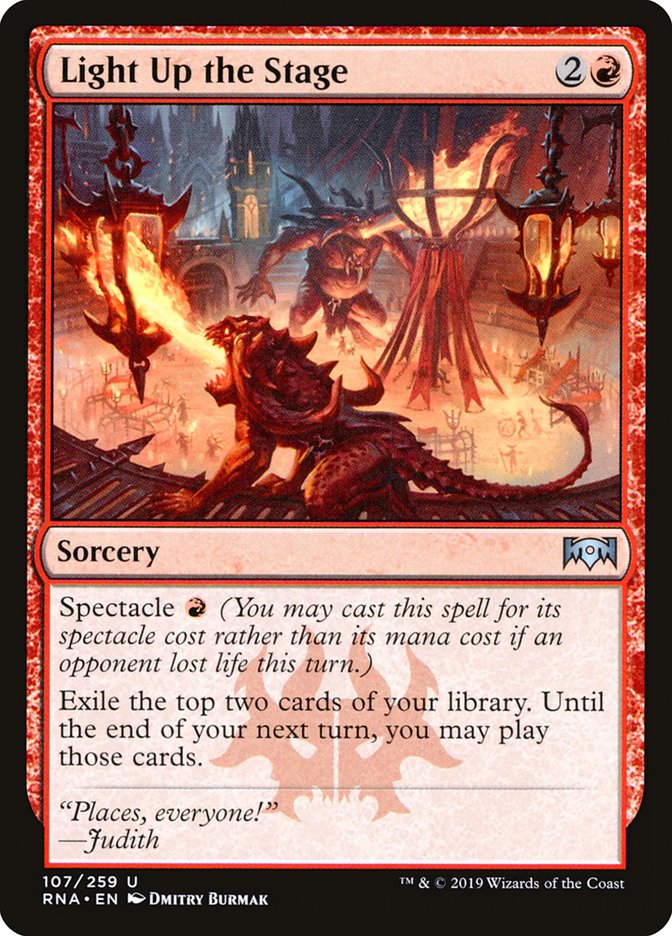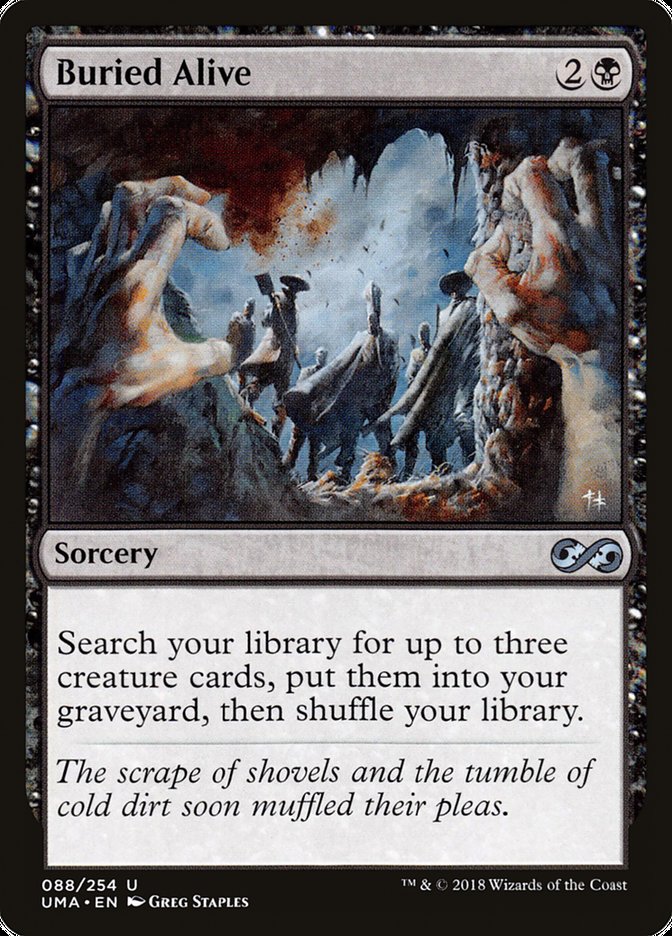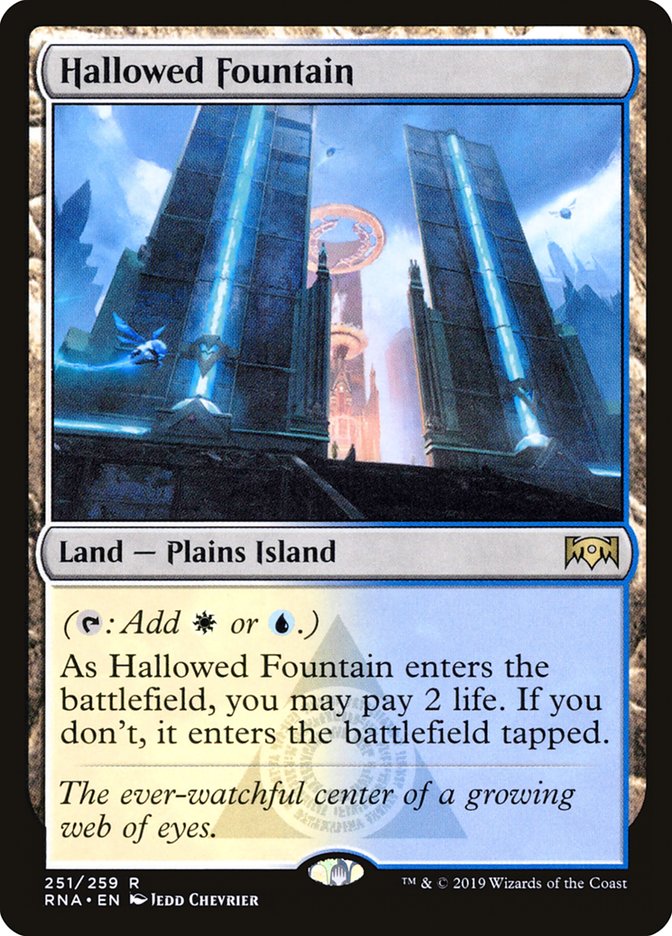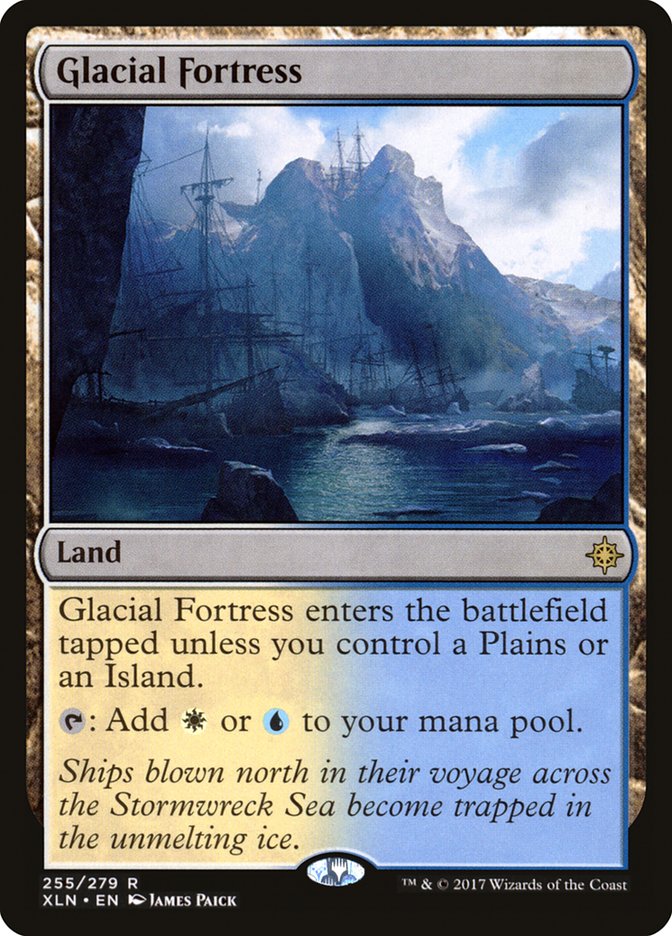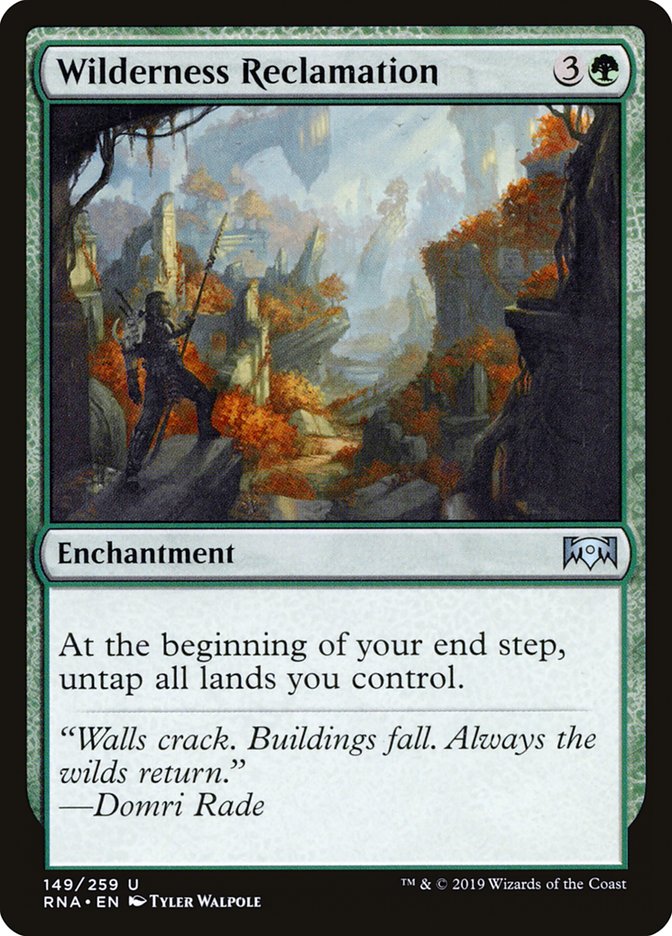If you tuned in to SCG Baltimore, you had the pleasure of seeing three formats in a state of uncertainty. In Standard, players were still grappling with the far-reaching impact of Ravnica Allegiance. Over in Modern, the recent ban of Krark-Clan Ironworks had left a subtle power-vacuum at the top of the format, with a horde of decks anxious to stake a claim to the throne as the de facto “best deck.” And while Legacy has remained mostly unchanged, one potent Bird was squawking for its opportunity to warp yet another format with its fiery explosiveness.
As I noted last week, doing coverage at an event opens a whole new perspective. Over the course of carefully watching eighteen rounds of Standard, Modern, and Legacy, I left Baltimore with a very clear sense of what individual cards shone brightest, and which cards should be sent to the sidelines. As will now be tradition after each of my coverage gigs on the SCG Tour, let’s look at the overperforming and underperforming individual cards from SCG Baltimore.
Overperformers
Thief of Sanity has my vote as the most appropriately named Magic card of all-time. When Thief of Sanity hits the battlefield, the most meticulous, thoughtful, careful, and well-reasoned lines of play completely go out the window as an opponent’s focus shifts to obsessively murdering the Thief. And the messed-up thing is that the obsession is completely justified.
Thief of Sanity instantly changes the terms of engagement of the game. If allowed to live, Thief will snowball resources in its controller’s favor so dramatically that it’s almost impossible to defeat. One of the big reasons Esper Control was able to establish itself as the current top dog in the Standard format is the sideboard switcheroo Thief of Sanity brought to the table.
Planeswalkers (4)
Lands (26)
Spells (30)
- 4 Absorb
- 3 Mortify
- 2 Negate
- 3 Vraska's Contempt
- 2 Search for Azcanta
- 2 Moment of Craving
- 1 Cast Down
- 4 Thought Erasure
- 3 Chemister's Insight
- 2 Precognitive Perception
- 4 Kaya's Wrath
Sideboard

Creatures (1)
Planeswalkers (4)
Lands (26)
Spells (29)
- 4 Absorb
- 3 Mortify
- 2 Negate
- 3 Vraska's Contempt
- 2 Search for Azcanta
- 2 Moment of Craving
- 1 Cast Down
- 4 Thought Erasure
- 3 Chemister's Insight
- 1 Precognitive Perception
- 4 Kaya's Wrath
Sideboard

Planeswalkers (6)
Lands (26)
Spells (28)
- 3 Absorb
- 2 Syncopate
- 3 Mortify
- 1 Negate
- 2 Vraska's Contempt
- 1 Settle the Wreckage
- 2 Search for Azcanta
- 1 Moment of Craving
- 2 Cast Down
- 4 Thought Erasure
- 2 Precognitive Perception
- 1 Consecrate
- 3 Kaya's Wrath
- 1 Warrant
Sideboard

Planeswalkers (5)
Lands (26)
Spells (29)

Sideboarding out your removal spells against control! In this economy!? All four Esper Control players from the Team Constructed Open Top 8 played the full four copies of Thief of Sanity in their sideboard, and rightfully so. Even some Sultai Midrange players got in on the action!
Creatures (25)
- 4 Llanowar Elves
- 2 Carnage Tyrant
- 4 Wildgrowth Walker
- 4 Merfolk Branchwalker
- 4 Jadelight Ranger
- 2 Ravenous Chupacabra
- 1 Midnight Reaper
- 3 Hydroid Krasis
- 1 Incubation Druid
Planeswalkers (4)
Lands (24)
Spells (7)
Sideboard

If your opponent has access to Dimir mana in their deck, be prepared to answer Thief of Sanity in sideboard games, or you will lose. Period.
Here’s the part of the article where I say something bonkers and then get yelled at for a few weeks until everyone realizes I was right. Mortify is the best removal spell in Standard. We spent preview season all worked up over Bedevil, but we had forgotten that while we were bogged down in the mess that was Kaladesh-based Standard, the rules for planeswalkers were being rewritten. With planeswalkers no longer the focal point of the format, the incentive to tack planeswalker control onto our creature removal is dramatically reduced. Meanwhile, you know what type of card has gotten stronger?
The list could go quite a bit deeper, but I’m sure you get the picture. The ability of Mortify to provide a maindeckable answer to such a diverse array of game-ending effects is a huge part of the reason why non-Esper control decks have failed to find any real foothold in the format. Its existence also points to the fact that there are probably more decks focused on the Orzhov guild that deserve exploration. How about this list that Zac Elsik used to secure a Mythic Championship invite?
Creatures (21)
- 4 Tocatli Honor Guard
- 4 Adanto Vanguard
- 3 Lyra Dawnbringer
- 2 Shalai, Voice of Plenty
- 3 Resplendent Angel
- 4 Seraph of the Scales
- 1 Angel of Grace
Lands (25)
Spells (14)

Elsik has proven himself a talented deckbuilder and I think he found the keys to unlock Tocatli Honor Guard in this format. Returning to something more akin to Brad Nelson’s Boros Angels list from Grand Prix New Jersey was not realistic in a world that had to account for decks like Bant Nexus or Nexus of Gates. Instead, Zac leveraged a respectable clock, a playset of Duress, and a maindeck removal spell for Wilderness Reclamation to get those matchups into acceptable ranges, all while directly targeting the enters-the-battlefield abilities in Sultai Midrange. It would not shock me at all to see this deck pick up some metagame share at SCG Dallas.
At one point in our broadcast on Sunday, I asked Todd Anderson if it was a mistake to play a Modern deck that didn’t have Arclight Phoenix. He wasn’t willing to go that far, and I’m not either. But I’m getting really close.
Creatures (10)
Lands (18)
Spells (32)

Creatures (12)
Lands (18)
Spells (30)

Somewhat buried in the story of Izzet Phoenix’s dominance of the Modern format over the past few months is the fact that we’re still figuring out how to maximize the card. The grandfather of the archetype, Ross Meriam, was experimenting with Pteramanders this week, but one of the champions, Ryan Overturf, looked to push things even further.
One of the most complimentary things I can say about Ryan’s deck is that his Traverse the Ulvenwalds added a new element to the archetype without doing any immediately noticeable damage. It’s unquestionable that at some point the delayed draw from a Mishra’s Bauble is going to mess up a spell chain and prevent recursion of Arclight Phoenix on a key turn, but I watched Ryan’s deck a lot over the weekend, and this was not a scenario I ever saw. Beyond that, some further experimentation might turn up some truly matchup-altering one-ofs that can be found with Traverse.
Here’s an even scarier possibility for you to consider. What if Izzet Phoenix isn’t even the best Arclight Phoenix deck in Modern?
Spells (28)
- 4 Lightning Bolt
- 4 Lava Spike
- 4 Manamorphose
- 4 Gut Shot
- 4 Faithless Looting
- 4 Light Up the Stage
- 4 Skewer the Critics
Sideboard

Jeff Carr casually refused to lose even a single match at SCG Baltimore. This achievement will get less press than it deserves since it happened in the context of a team tournament, but maybe Jeff just straight-up broke it. And he did so by leveraging a new Ravnica Allegiance card which shone even brighter in the Modern rounds than in Standard.
Not only was Light Up the Stage the one-mana draw-two (?!) that Mono-Red Phoenix was missing, but it may completely revolutionize the way one of Modern’s oldest archetypes is built.
Creatures (13)
Lands (19)
Spells (28)

The addition of Light Up the Stage has reduced the average converted mana cost of the Burn deck even further, and that means there are few fail-states left in the deck. Draw a couple of lands, and you’re just going to be slinging three points of damage at your opponent repeatedly until one of you is dead.
Don’t sleep on Cindervines as a new tool for Burn, either. No deck will leverage the damage from Cindervines better than Burn, and holding up one mana to activate a Cindervines versus two for Destructive Revelry can make a world of difference when every point of damage matters. Just hope folks don’t pick up Ryan Overturf’s Life Goes On tech.
Creatures (9)
Lands (16)
Spells (35)

To say I spent the weekend excited about this deck would be a dramatic understatement. I would have had Tommy Ashton on camera every round if it was up to me, because I wanted to know everything about how his Grixis Phoenix deck works. Cabal Therapy has been trending down in play since the removal of Deathrite Shaman from the format, but Grixis Phoenix has brought it back with a vengeance. In fact, I’d argue this is a Cabal Therapy deck before anything else.
It’s downright amazing that this deck contains zero copies of Faithless Looting, but I get it. You’re already playing some virtual card disadvantage in the form of Lotus Petal, Dark Ritual, and Buried Alive. Instead we’re relying on Brainstorm putting back copies of Phoenix before you cast Buried Alive and Cabal Therapy targeting yourself. It all works and does so while retaining access to the card selection that’s a hallmark of Legacy blue decks. This deck is explosive while being disruptive, and powerful while being consistent. This might just be the future of Legacy.
Underperformers
It feels weird to naysay the deck that took first place in the Team Constructed Open and second place in the Standard Classic, but are we 100% sure that we’re supposed to be splashing blue in these white aggro decks?
Creatures (29)
- 4 Snubhorn Sentry
- 4 Benalish Marshal
- 4 Dauntless Bodyguard
- 1 Healer's Hawk
- 4 Venerated Loxodon
- 4 Hunted Witness
- 4 Tithe Taker
- 4 Deputy of Detention
Lands (21)
Spells (10)
Sideboard

Creatures (28)
- 3 Adanto Vanguard
- 4 Skymarcher Aspirant
- 4 Snubhorn Sentry
- 4 Benalish Marshal
- 4 Dauntless Bodyguard
- 4 Venerated Loxodon
- 2 Hunted Witness
- 1 Tithe Taker
- 2 Deputy of Detention
Lands (20)
Spells (12)

Over the course of the weekend, I saw many players stuck with uncastable Deputy of Detentions in hand. Meanwhile, in sideboard games, drawing reactive cards like Negate or Spell Pierce at a point where aggression was needed doomed many a white mage. It’s easy to remember the games you curved out perfectly on Turns 1, 2, and 3 and had the Negate for your opponent’s Kaya’s Wrath, but I’m concerned that the collective isn’t being honest about how often this actually proves to be the case. Azorius Aggro is presently winning despite its blue splash, not because of it. There are two alternate ways to build this deck that I’d recommend for SCG Dallas.
Creatures (27)
- 4 Adanto Vanguard
- 4 Snubhorn Sentry
- 4 Benalish Marshal
- 4 Dauntless Bodyguard
- 4 Venerated Loxodon
- 4 Hunted Witness
- 3 Tithe Taker
Lands (20)
- 20 Plains
Spells (13)

Creatures (27)
- 4 Adanto Vanguard
- 4 Snubhorn Sentry
- 4 Benalish Marshal
- 4 Dauntless Bodyguard
- 4 Venerated Loxodon
- 4 Hunted Witness
- 3 Tithe Taker
Lands (20)
Spells (13)
Sideboard

I’ve built the maindeck to be a bit more resilient against Esper Control with Hunted Witness, Dauntless Bodyguard, and Tithe Taker. Builds like this get back to the core tenets of Mono-White Aggro. Duress strikes me as a more proactive way of disrupting opposing gameplans, and Unbreakable Formation is the counterspell for Kaya’s Wrath you’ve been looking for.
I’m shocked how little Unbreakable Formation I’ve seen thus far. The card has been bonkers in my own games, mattering against every archetype. Now you can get wide and attack into a Sultai Midrange opponent who has gummed up the ground without forfeiting your entire team (or the game, for that matter); outsize Mono-Red Aggro; and accelerate your clock against Nexus of Fate, all with one card.
There was little to be heard from The Chainwhirler at SCG Baltimore, and that’s not entirely surprising. Mono-Red Aggro has shifted its power to a different place. This archetype belongs to Skewer the Critics and Light Up the Stage now, and if its going to find success, its time to kill some sacred cows (but seriously, don’t kill cows, they’re like big grass puppies).
Again, we’re attempting to maximize the impact of Light Up the Stage by lowering our average converted mana cost, and that meant The Chainwhirler had to go. This deck plays in one direction, and that’s hard to accept in the aftermath of Kaladesh Standard where red decks had some real strategic diversity. The fact is, though, Sultai Midrange and Esper Control both have access to the spells required to win on the battlefield. If Mono-Red is going to find success, it’s going to do so on the stack, by generating as much damage per card as possible.
The sideboard copies of Nullhide Ferox are courtesy of Gerry Thompson. At some point he’ll realize that, when he suggests something to me half in jest, there is about a 99.9% chance I’ll buy in wholesale. Straight up, I don’t think you can beat a Basilica Bell-Haunt without Ferox. If Esper Control continues to adopt Bell-Haunt, I actually like this nonsense. Given Mono-Red Aggro’s poor performance in Baltimore, I’d say that’s far from a certainty. You can do something way more boring like Rekindling Phoenix and I’ll forgive you.
Wilderness Reclamation also made the list of underperformers last week. I wanted to include it one last time, because I have the feeling that SCG Baltimore may be the last tournament Wilderness Reclamation underperforms in. With less Mono-Red keeping players honest, Wilderness Reclamation decks have begun to turn the corner.
Planeswalkers (2)
Lands (24)
Spells (34)
- 4 Opt
- 3 Search for Azcanta
- 4 Revitalize
- 4 Nexus of Fate
- 4 Root Snare
- 3 Chemister's Insight
- 4 Growth Spiral
- 4 Depose
- 4 Wilderness Reclamation
Sideboard

Planeswalkers (3)
Lands (25)
Spells (32)

Creatures (4)
Lands (26)
Spells (30)
- 4 Nexus of Fate
- 4 Guild Summit
- 2 Chemister's Insight
- 3 Expansion
- 2 Lava Coil
- 4 Circuitous Route
- 4 Growth Spiral
- 3 Wilderness Reclamation
- 4 Gates Ablaze
Sideboard

Creatures (7)
Lands (25)
Spells (28)

A victory in the Magic Online MCQ is just the first notch in the belt of Wilderness Reclamation. It won’t be the last. You have been warned.


